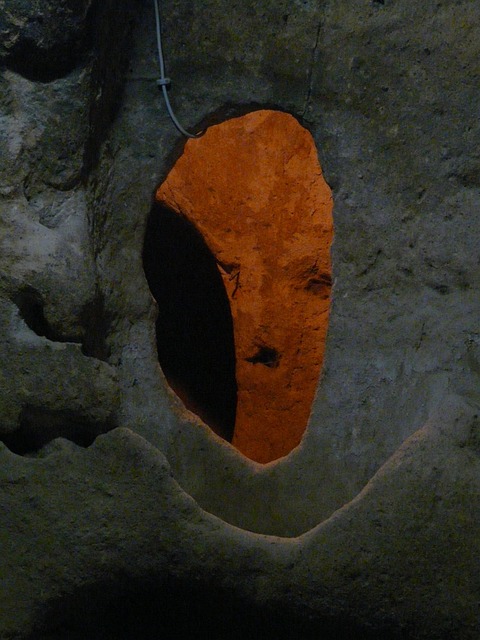Non-destructive excavation (NDE) techniques, leveraging advanced technologies like ground-penetrating radar and electromagnetic location, enable precise mapping of underground utilities without disturbing existing services. This minimizes construction impacts, enhances project efficiency and safety, and safeguards critical utility integrity, making NDE an indispensable modern construction practice for infrastructure development. Accurate utility exposure through NDE facilitates efficient planning, reduces disruptions, and minimizes risks associated with unforeseen conflicts. Best practices include detailed planning, advanced technology, specialized professionals, regular communication, robust safety protocols, and adherence to industry standards.
In the realm of infrastructure development, ensuring precise utility exposure is paramount to avoid costly disruptions. This article explores how advanced techniques, particularly non-destructive excavation (NDE) methods, are transforming the landscape of utility management. We delve into the challenges posed by traditional methods and highlight the benefits of NDE in enhancing safety, efficiency, and project timelines. By understanding these strategies, folks can navigate complex urban landscapes with confidence, fostering a revolution in infrastructure projects.
Understanding Utility Exposure and Its Challenges
Understanding utility exposure involves identifying and assessing the location, type, and extent of underground utilities that could be affected by infrastructure projects. This process is crucial for avoiding costly disruptions and potential safety hazards associated with damaging critical services like water, gas, power, or communication networks. However, it presents significant challenges due to the complex and dynamic nature of utility infrastructures.
Non-destructive excavation (NDE) techniques play a vital role in navigating these challenges. By employing advanced technologies such as ground-penetrating radar, electromagnetic location, and sonar, NDE allows for precise mapping of utilities without physical disturbance. This approach ensures that construction activities can proceed with minimal impact on existing services, enhancing project efficiency and safety while safeguarding the integrity of essential utilities.
The Role of Non-Destructive Excavation Techniques
In the realm of infrastructure development, precision is key, especially when it comes to utility exposure. Non-destructive excavation (NDE) techniques play a pivotal role in achieving this. These advanced methods allow for accurate identification and mapping of underground utilities without causing damage or disruption to the surrounding environment. By employing NDE, construction teams can precisely locate critical infrastructure such as water pipes, gas lines, and electric cables, ensuring safe and efficient excavation.
Using cutting-edge tools like ground-penetrating radar (GPR) and electromagnetic location, NDE techniques provide real-time data on utility positions and depths. This information is invaluable for planning and executing infrastructure projects with minimal impact. As a result, NDE not only reduces the risk of costly accidents but also streamlines project timelines, making it an indispensable practice in modern construction and development.
Strategies for Precise Identification and Mapping
Identifying and mapping utility infrastructure accurately is a critical step in supporting any construction or infrastructure project. This process requires precise strategies to ensure minimal disruptions and potential damage. One effective method is non-destructive excavation (NDE), which allows for visual inspection of underground utilities without damaging them. NDE techniques, such as hand digging, vacuum excavation, and ground-penetrating radar (GPR), enable utilities to be located and mapped with high precision.
By employing these methods, project managers can gain detailed insights into the layout and condition of existing utility lines, including pipes, cables, and wires. This information is invaluable for planning and designing projects that safely incorporate and maintain these critical infrastructure assets. Accurate mapping also facilitates efficient coordination among various stakeholders, ensuring a smoother construction process and reduced risks associated with unforeseen utility conflicts.
Benefits and Best Practices for Infrastructure Projects
Infrastructure projects benefit greatly from precise utility exposure, enabling efficient and safe navigation through complex underground networks. By employing non-destructive excavation techniques, construction teams can uncover critical utilities with minimal disruption, reducing delays and potential damage. This approach ensures that vital services like water, gas, and electricity remain operational throughout the project’s lifecycle.
Best practices include detailed planning, utilizing advanced technology for mapping, and engaging specialized utility locating professionals. Regular communication between stakeholders, including utility companies, contractors, and inspectors, is essential to coordinate efforts and maintain up-to-date information. Additionally, implementing robust safety protocols and adhering to industry standards guarantee a secure working environment, minimizing risks associated with utility exposure.
In conclusion, precise utility exposure through advanced non-destructive excavation techniques is pivotal for successful infrastructure projects. By employing strategies that ensure accurate identification and mapping of underground utilities, project managers can mitigate risks, reduce costs, and enhance overall efficiency. Adopting these best practices not only streamlines construction but also safeguards critical infrastructure, ensuring a safer and more sustainable built environment.
